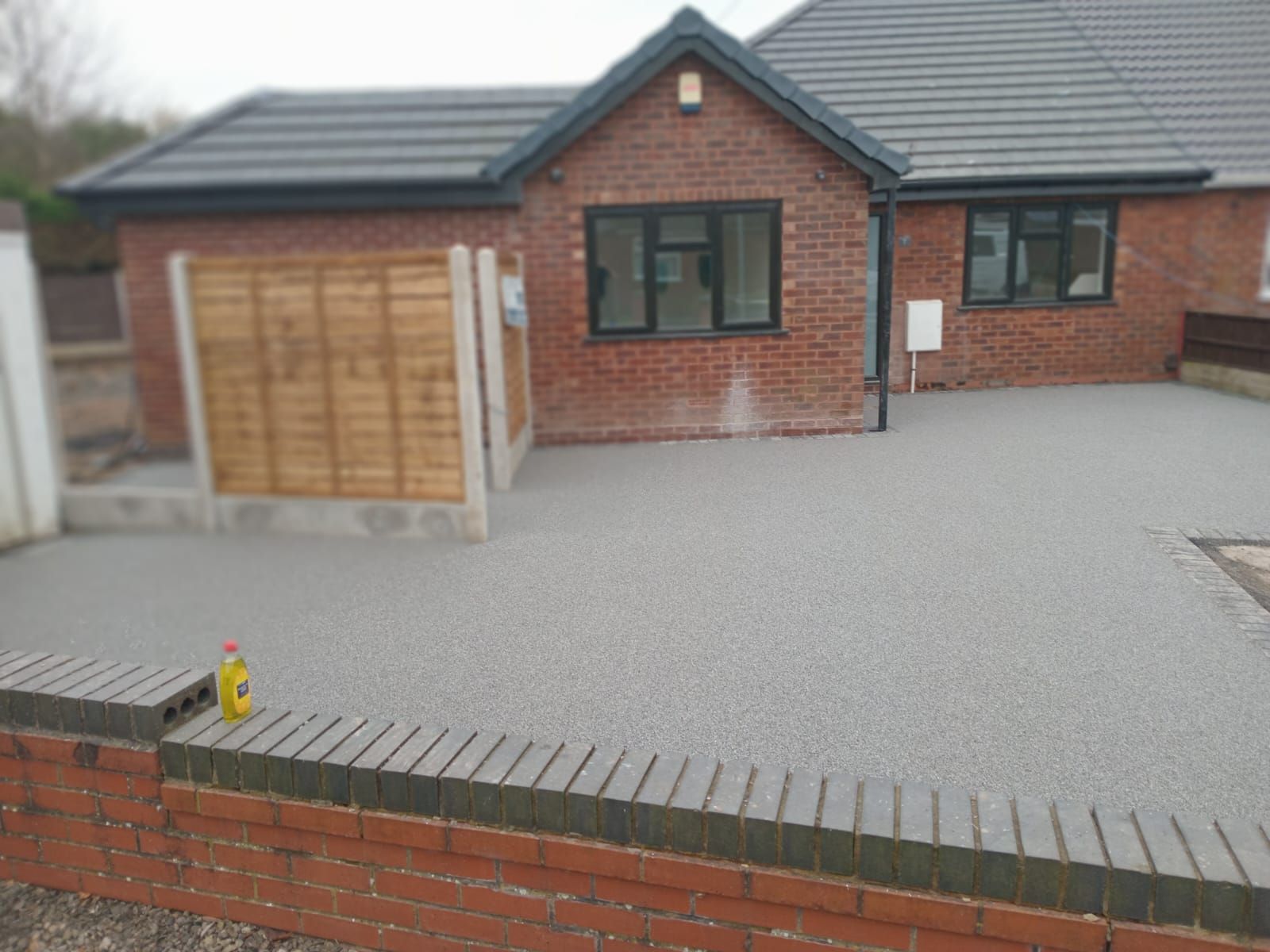Ensuring optimal resin-bound driveway drainage for property safety
Ensuring optimal resin bound driveway drainage for property safety: Key strategies for homeowners in Essex
Resin bound driveways offer an attractive and durable surface for properties, but their effectiveness hinges on proper drainage. Without adequate water management, these driveways can develop issues that compromise both aesthetics and safety. Ensuring optimal drainage for resin-bound driveways involves careful planning, proper installation techniques, and regular maintenance.
Proper drainage is crucial for preventing water accumulation, which can lead to surface damage, slippery conditions, and potential flooding around the property. A well-designed resin-bound driveway should incorporate a permeable surface that allows water to percolate through, reducing runoff and promoting natural groundwater recharge.
To achieve optimal drainage, it's essential to consider factors such as the driveway's slope, subbase composition, and surrounding landscape. Implementing the right drainage solutions not only protects the driveway itself but also contributes to overall property safety and compliance with local regulations.
Understanding Resin Bound Driveway Systems
Resin-bound driveways offer a modern, durable, and permeable surface solution for residential and commercial properties. These systems combine aesthetics with functionality, providing a smooth finish that allows water to drain through effectively.
Key Components of a Resin Bound Driveway
Resin bound driveways consist of aggregates mixed with a clear polyurethane resin. The primary components include:
- Aggregates: Typically 1-3mm and 2-5mm in size, made from materials like granite, quartz, or marble.
- Resin: A clear, strong adhesive that binds the aggregates together.
- Sub-base: A crucial layer of compacted crushed stone for stability and drainage.
- Finishing layer: The top layer of resin bound aggregate, usually 18-20mm deep.
The mixture of resin and aggregates creates a permeable surface, allowing water to pass through and reducing the risk of flooding or standing water.
Differences Between Resin Bound and Resin Bonded Surfaces
Resin bound and resin bonded surfaces are often confused, but they have distinct characteristics:
Resin bound:
- Aggregates mixed with resin before application
- Permeable surface
- Smooth, seamless finish
- Deeper layer (15-20mm)
- More durable and longer-lasting
Resin bonded:
- Resin applied first, then aggregates scattered on top
- Non-permeable surface
- Textured, gravel-like finish
- Thinner layer (3-6mm)
- Less expensive but shorter lifespan
Resin bound surfaces offer superior drainage capabilities, making them ideal for SUDS-compliant installations. They also provide better slip resistance and a more uniform appearance compared to resin-bonded alternatives.
Ensuring Effective Drainage and Maintenance
Proper drainage and maintenance are crucial for the longevity and safety of resin-bound driveways. These elements protect against water damage and ensure optimal performance in various weather conditions.
Pre-installation Considerations for Optimal Drainage
Drainage planning begins before installation. Assess the site's topography and soil type to determine water flow patterns. Conduct a permeability test to gauge the ground's ability to absorb water.
Consider a SUDS-compliant installation for flood-prone areas. This system effectively manages surface water runoff, reducing flood risk.
Proper base preparation is essential. Excavate to an appropriate depth and install a geotextile membrane to prevent weed growth and enhance stability. Create a sub-base using permeable materials like crushed stone.
Ensure the driveway has a slight slope (1:60 to 1:80) away from buildings. This gradient promotes natural water runoff and prevents pooling.
Post-installation Practices for Maintaining Drainage Efficiency
Regular maintenance preserves the driveway's permeability and appearance. Sweep the surface weekly to remove debris that could clog pores. Use a leaf blower for efficient cleaning.
Pressure wash the driveway annually to clear embedded dirt. Use a gentle setting to avoid damaging the resin.
Inspect the surface periodically for cracks or damage. Address issues promptly to prevent water ingress and further deterioration.
In winter, avoid using salt for de-icing as it can damage the resin. Instead, use sand or kitty litter for traction on icy patches.
For commercial areas with heavy foot traffic, consider more frequent cleaning and inspections to maintain drainage efficiency.
Frequently Asked Questions
Proper drainage is crucial for resin bound driveways to ensure safety and longevity. These questions address key aspects of drainage design, maintenance, and environmental considerations.
What are the essential considerations for integrating drainage into resin-bound driveway installations?
Proper base preparation is critical. A permeable sub-base of crushed stone allows water to drain through.
Slope the driveway away from buildings at a 1-2% gradient. Install drainage channels or French drains along edges to collect excess water.
How do you ensure proper water management for resin bound driveways?
Use a resin mix with the right porosity. This allows water to percolate through while remaining stable.
Incorporate drainage solutions like permeable edging or hidden channels. These direct water away from the driveway and property.
What maintenance procedures are recommended to preserve the drainage effectiveness of a resin-bound driveway?
Regularly sweep debris from the surface to prevent clogging of pores. Pressure wash annually to remove dirt buildup.
Check drainage channels for blockages. Clear them of leaves and sediment to maintain proper water flow.
Can resin-bound driveways improve property safety by reducing water accumulation?
Yes, resin-bound surfaces minimize standing water. This reduces slip hazards and ice formation in cold weather.
The porous nature of resin-bound materials allows rapid drainage, preventing puddles and runoff issues.
What are the environmental impacts of resin-bound driveway drainage systems?
Resin-bound systems help replenish groundwater by allowing natural percolation. This reduces strain on storm sewers.
They filter pollutants as water passes through, improving local water quality. Choose eco-friendly resin options for minimal environmental impact.
How does the installation of a resin-bound driveway compare with other materials in terms of drainage and property safety?
Resin bound surfaces offer superior drainage compared to impermeable options like concrete or asphalt. They eliminate pooling and runoff issues.
Installation costs may be higher, but long-term benefits include improved safety and reduced water management problems.
Conclusion
In conclusion, taking the necessary steps to ensure optimal drainage for resin-bound driveways protects both the driveway and the surrounding property from water-related issues. Properly installed and maintained resin-bound surfaces not only enhance the aesthetic appeal of your home but also contribute to property safety by reducing the risks associated with water accumulation, such as flooding and slippery conditions. As a result, homeowners can enjoy the long-term benefits of a durable, attractive, and low-maintenance driveway, all while being confident that it will stand up to the challenges posed by weather and time.
For further information, Click here to visit our website or call Essex Resin Driveways on 01245-968085.
Click here to complete our contact form and see how we can help you with your Driveway requirements.
You might also like
Book a Service Today
We will get back to you as soon as possible
Please try again later
Location
Call
All Rights Reserved | Essex Resin Driveway | Powered by Snapps


